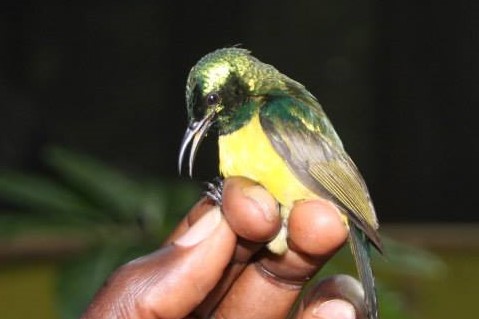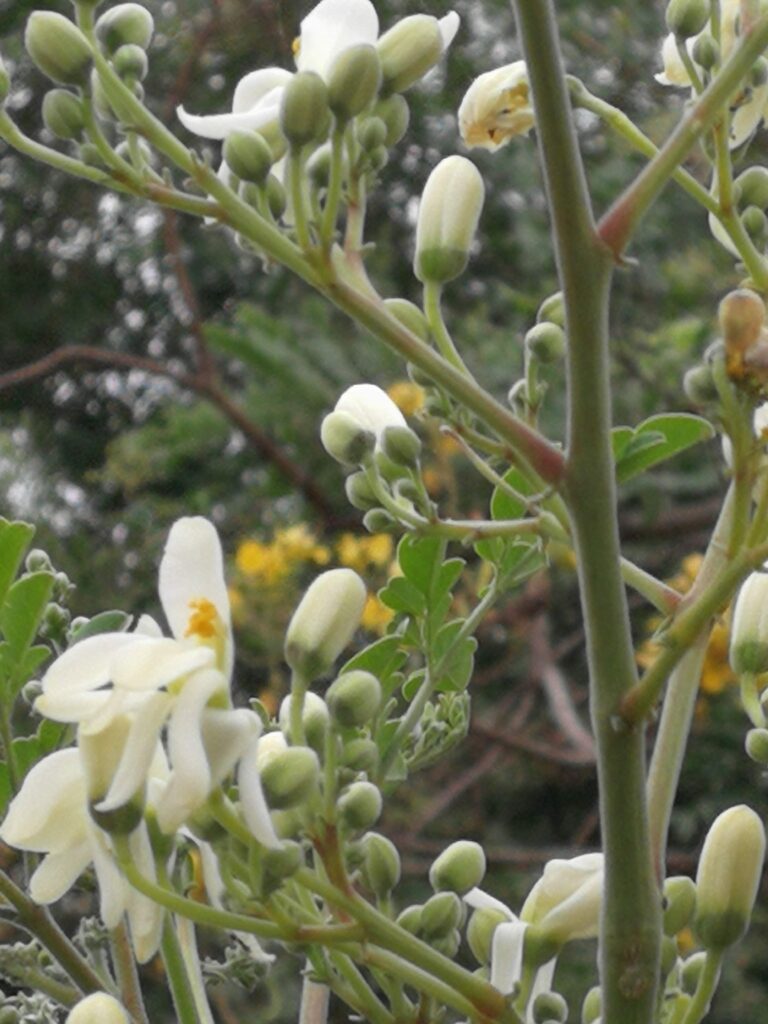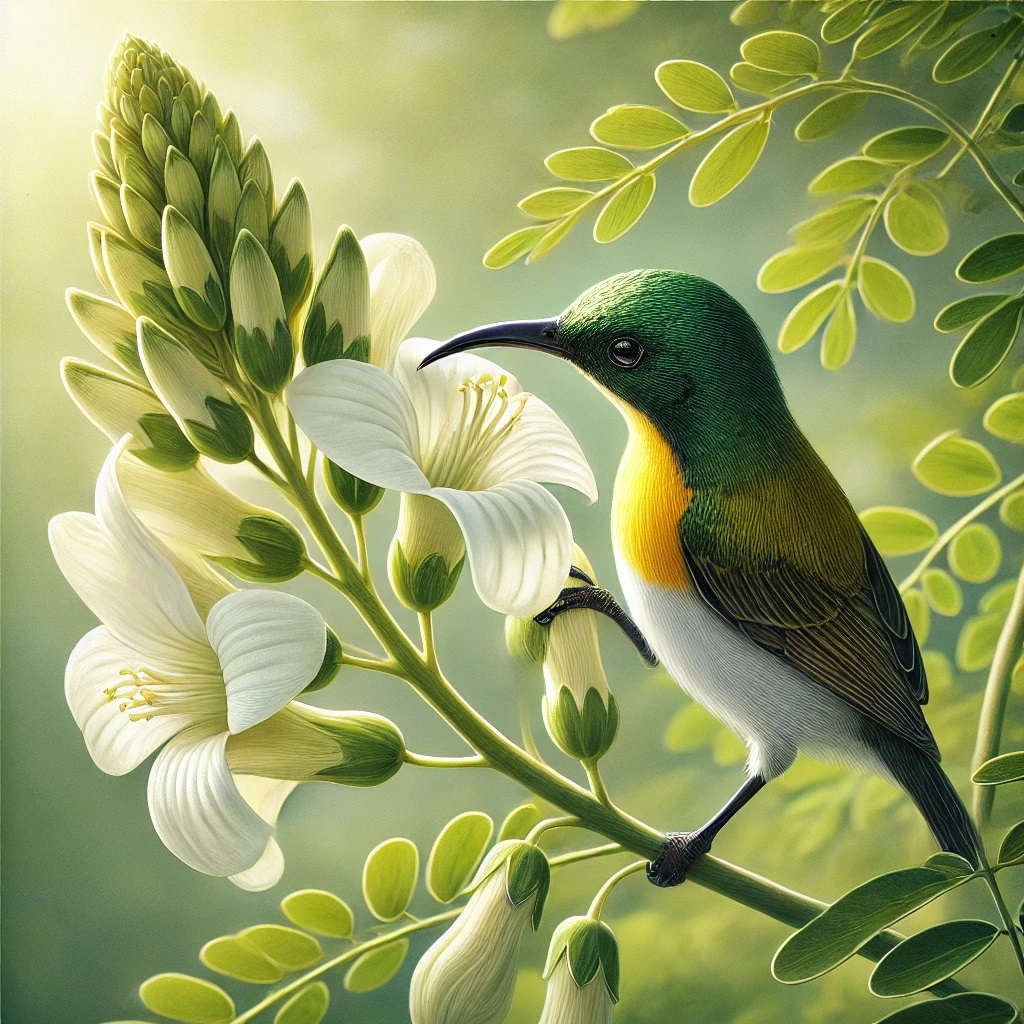Your basket is currently empty!
The Moringa Artificial Forest.
A Multi-Layered Approach to Sustainability and Productivity
The moringa artificial forest offers an innovative, three-layered agroforestry model that maximizes productivity, enhances sustainability, and supports ecological balance. With each layer performing distinct functions, the forest provides a holistic approach to land use, transforming barren landscapes into vibrant ecosystems. Below, we explore the three layers, their functionalities, and the impactful products and byproducts they generate.
Layered Structure and Functionalities
| Layer | Description | Main Benefits |
|---|---|---|
| Upper Layer – Moringa Trees | Consists of moringa trees spaced 2.5 meters apart, pruned to a height of 1.5 meters for easy harvesting. | – Nutrient-Rich Biomass Production: Produces leaves, seeds, oil, and seedcake for consumption and commercial use. – Shade & Microclimate Regulation: Provides dappled shade, reducing water evaporation. – Soil Health & Erosion Control: Deep roots stabilize soil and improve structure. |
| Middle Layer – Leguminous Plants | Legumes grow under the moringa canopy, adding nitrogen to the soil and creating a natural mulch. | – Soil Fertility Enhancement: Naturally fixes nitrogen, improving soil health without synthetic fertilizers. – Additional Biomass: Provides protein-rich food, animal fodder, and green manure. – Weed Suppression: Dense cover minimizes weed growth and herbicide use. |
| Ground Layer – Cover Crops & Beneficial Microorganisms | Low-growing cover crops and microorganisms create a protective layer at the soil’s surface. | – Soil Moisture Retention: Retains moisture, essential for growth in dry areas. – Microbial Health & Soil Enrichment: Supports healthy soil microbiota and nutrient availability. – Erosion Control & Carbon Sequestration: Stabilizes soil and aids in carbon storage. |
Pollinators in the Moringa Artificial Forest
Pollinators are crucial for moringa’s successful flowering and fruiting. Each pollinator plays a unique role in supporting high-quality yields and sustaining biodiversity:



An artificial Collared Sunbird searches for nectar among moringa flowers—a vital food source for pollinators. Moringa’s blooms support biodiversity, helping to combat the ‘bug-collapse’ caused by diminishing food sources.
| Pollinator | Role | Pollination Method |
|---|---|---|
| Honeybees (Apis spp.) | Primary pollinators due to high activity levels and efficient pollen transfer. | Collect nectar from moringa flowers, transferring pollen between flowers, essential for increased seed set and better yields. |
| Butterflies | Attracted to moringa’s fragrance; contribute to pollination during daylight. | Transfer pollen when feeding on nectar, especially active in warmer weather. |
| Sunbirds | Nectar-feeding birds adapted for deep flowers; significant in regions where present. | As sunbirds feed, their heads brush against pollen and stigma, facilitating cross-pollination. |
| Moths | Active at dawn and dusk, especially attracted to moringa’s evening scent. | Hover and feed on moringa nectar, brushing against pollen and stigma during feeding. |
| Fruit Bats & Bush Babies | Nocturnal pollinators, offering a backup system if other pollinators are scarce. | Attracted to the scent of moringa flowers at night, transferring pollen while feeding. |
To maximize pollination, it is recommended to introduce 2 to 4 beehives per hectare, which boosts pollination rates and increases pod and seed yields while also allowing honey production from moringa’s nectar-rich flowers.
Products and Byproducts from Moringa Artificial Forest
The moringa artificial forest delivers high-value products and impactful byproducts that contribute to economic, environmental, and social benefits.
| Component | Products | Byproducts & Benefits |
|---|---|---|
| Fruits | – Seeds: Yield oil for cosmetics, cooking, and biodiesel. – Seedcake: Used as protein-rich animal feed and a natural coagulant for water purification. | – Water Purification: Moringa seedcake clarifies water naturally, reducing synthetic chemical use in water treatment. – Biodiversity Support: Fruits attract birds and small mammals, creating a healthy ecosystem and supporting local wildlife. |
| Leaves | – Dried Leaf Powder: A nutrient-dense superfood used in supplements and functional foods. – Fresh Leaves: Consumed for health benefits. | – Soil Enrichment: Composting unused leaves returns nutrients to the soil. – Animal Feed: Fresh or dried leaves serve as high-protein livestock feed, promoting sustainable agriculture. – Pollinator Support: Moringa flowers attract pollinators, enhancing biodiversity and ecosystem stability. |
| Pruned Biomass | – Charcoal & Biomass Fuel: Converted to high-yield charcoal, a sustainable alternative to traditional charcoal. – Wood Vinegar: Natural pesticide and soil conditioner. | – Reduced Emissions: Advanced kilns reduce emissions by up to 90%, supporting cleaner air. – Indoor Air Quality: Moringa charcoal replaces wood, reducing respiratory risks. – Renewable Energy: Biomass serves as an eco-friendly fuel source, reducing fossil fuel dependence and supporting local energy needs. |
| Soil | – Carbon Sequestration: Moringa’s roots store carbon in the soil, aiding climate change mitigation. – Water Retention: Soil holds more moisture, reducing irrigation needs. | – Improved Soil Health: Roots encourage microbial health, enriching soil and promoting nutrient cycling. – Long-Term Fertility: Organic matter from moringa leaves and pruned biomass, along with nitrogen from legumes, leads to a fertile, self-sustaining ecosystem. |
In Summary
The moringa artificial forest is a sustainable, multi-functional ecosystem that provides a variety of valuable products while enhancing soil health, conserving water, and sequestering carbon. This layered system not only improves productivity but also contributes positively to biodiversity, climate resilience, and local economies. With its regenerative design, the moringa artificial forest demonstrates how a thoughtful approach to land use can provide both ecological and economic benefits, paving the way for a greener and more resilient future.

Before launching any conservation or restoration efforts, it’s crucial to first investigate biodiversity thoroughly. Baseline data exists for birds and mammals for Meru. However, smaller life forms like butterflies and dragonflies are less documented. They represent a rich diversity. With careful study, we may even uncover surprising new species, adding to our understanding of the ecosystem’s hidden complexities.
Leave a Reply